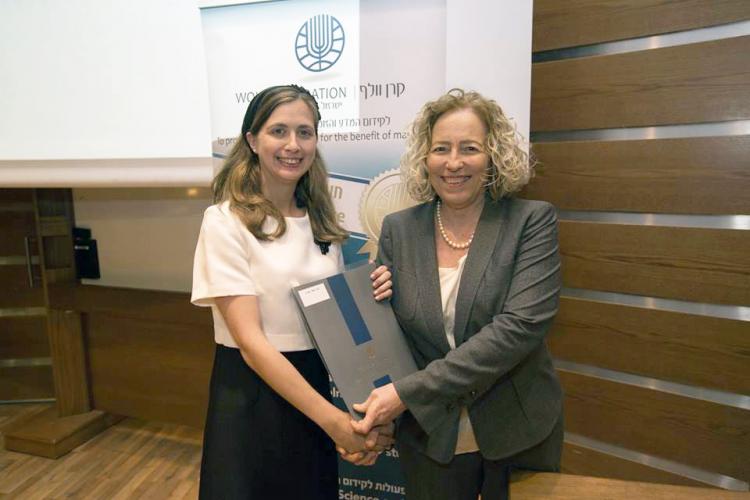Wolf Foundation Scholarship Awarded to PhD Candidate Rinat Meir

Cancer immunotherapy is a general term for clinical methods that seek to boost the body’s innate ability to target and destroy tumors. But while this approach – first explored over a century ago – has become the basis of a number of successful treatments, scientists have never been able to directly observe this success in action. Now, doctoral student Rinat Meir has changed all that, by demonstrating a new method for tracking the activity of cancer-specific T-cells in an animal model.
Cancer immunotherapy is a general term for clinical methods that seek to boost the body’s innate ability to target and destroy tumors. But while this approach – first explored over a century ago – has become the basis of a number of successful treatments, scientists have never been able to directly observe this success in action. Now, doctoral student Rinat Meir has changed all that, by demonstrating a new method for tracking the activity of cancer-specific T-cells in an animal model. Her non-invasive, quantitative method – described recently in the American Chemical Society journal ACSNano – provides important support for clinicians seeking to monitor the success or failure of immunotherapy procedures. It has also provided Meir with one of the most prestigious honors granted to PhD students: the Wolf Foundation Scholarship.
“Our method uses a combination of nanotechnology and CT scanning to achieve real-time tracking of T-cells as they target melanoma,” explains Meir, whose work is supervised by Engineering Faculty member Prof. Rachela Popovtzer, and who collaborated in this project with two biologists: PhD student Katerina Shamalov, and Prof. Cyrille Cohen from the BIU Faculty of Life Sciences. “We began by labeling melanoma-specific T-cells with gold nanoparticles in vitro. Later, when these ‘golden’ T-cells were transplanted into live mice, examination with whole-body CT resulted in a visual signal, revealing how these enhanced T-cells accumulated at the tumor site. Significantly, we were able to quantify what had never been directly observed before: how cells of the immune system arrive at the tumor.”
Validation of Meir’s results was made possible by an additional “adjustment” she introduced into her NP-enhanced T-cells: the attachment of a fluorescent marker.
“Optical fluorescence is the most common method used for cell tracking, but it has limitations, particularly in its lack of applicability for the imaging of deep-tissue structures and the fact that it is not clinically applicable,” Meir explains. “In our case, however, dual-labeled T-cells – engineered to have both gold nanoparticles and a fluorescent marker – demonstrated the reliability of our new cell tracking method. Successive CT and fluorescent screenings correlated remarkably well, showing parallel trends in signal intensity one, two and five days after T-cells transplantation. Because we know that the fluorescent marker would glow green only inside the cellular environment, this proved that our T-cells had arrived, and that the gold nanoparticles were present inside the T cells, rather than being secreted out. This is significant because it shows the reliability of our results. Our technique offers a valuable tool for elucidating – and quantifying – the success or failure of therapies based on using cells to target specific tissues.”
In the future, Meir plans to apply her technique to another agent of the body’s immune system: “Natural Killer” cells. However, she believes that the approach could prove useful on a wider scale, helping to evaluate pre-clinical and clinical cell-based treatments for conditions ranging from depression to neurodegeneration to muscular dystrophy.
“One of the most exciting things about our findings was the fact that our labeling with gold nanoparticles did not in any way affect T-cell function,” she says. “We hope that our ‘golden’ cells may someday become the ‘gold standard’ for tracking and evaluating the fate of any type of transplanted cells used for disease therapy.
Last Updated Date : 06/09/2017



